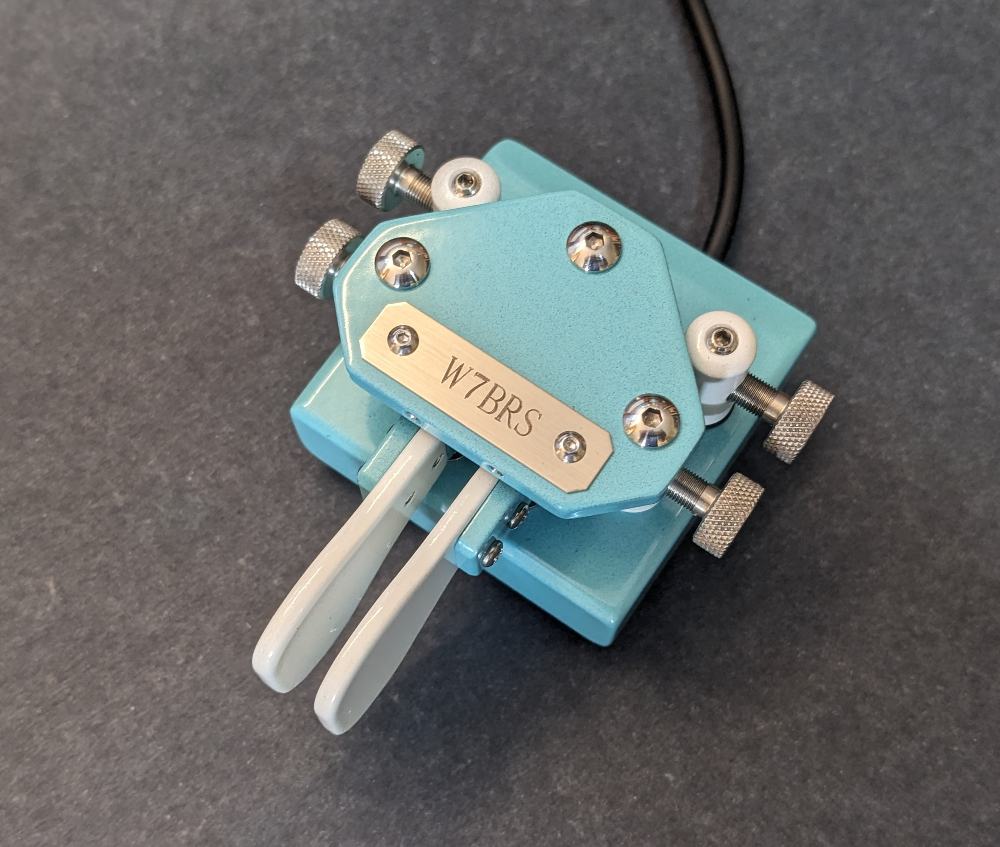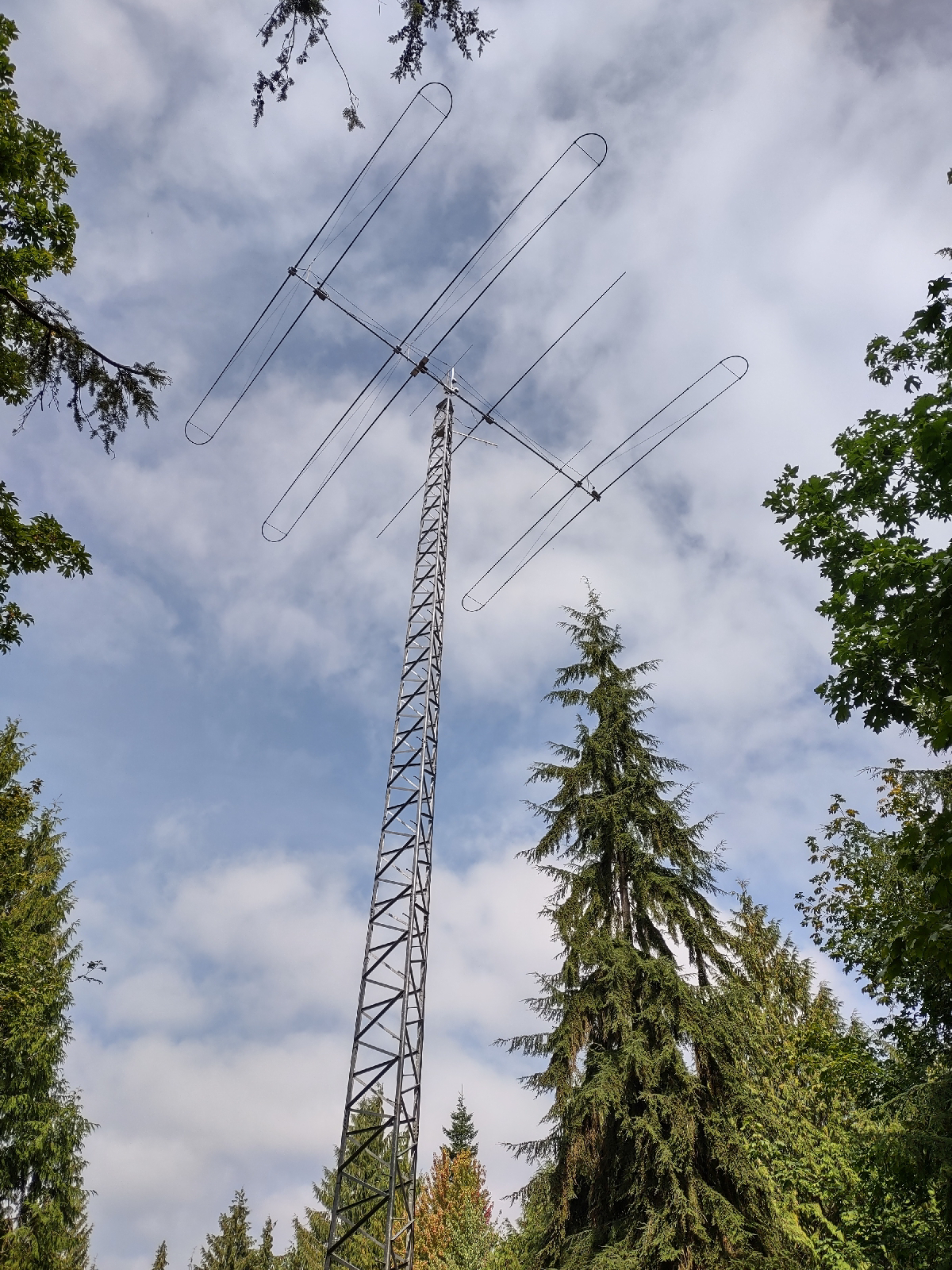Saturday, September 30, 2023
Long Island CW Club
Wednesday, September 20, 2023
Encoding MP3 for CW Practice
Pangram Audio Files
QSO Files
Monday, September 18, 2023
New Key
Sunday, September 17, 2023
Finished Salmon Run 2023
- We got to work K7TQ (Randy and Mike N7WA) on each of the counties they travelled -- many times on multiple bands. Fantastic!
- A lot of the WWDXC members were in the log too. N7SS -- we worked Dan I believe on all the bands 160-6. "7-Band-Dan" And for a lot of other members, we worked them on several bands during the contest. K5EM, WA6CPA, and a whole long list.
- The DX was great. 9N7AA was a good contact, and I believe we made contacts across all the continents except for Antarctica.
- The SAC provided a lot of good DX.
- Rusty and I chuckled at the spot-networks -- the Canadian provinces we really needed were skimming our signal routinely. But no VE6's or MT's to be found! Still we did reach into a VE2 late in the contest and that was great.
- About mid-way through the contest we re-mapped some of the Macro-keys to ask "QSY up?" essentially trying to get some contacts on 6m and 160m. It was fun when we'd get a bit of tracking on that.
- Our friend NN7SS also gave us some Q's -- and that was fun since the last time I heard NN7SS was when I was operating it for RSGB IOTA in July. Mark, K6UFO -- thanks for the QSOs!
SR goals
Making Qs
Near the end of Day 1 - Salmon Run
The Run for day 1 is almost over and we're doing great.
Far exceeded our 7-QP numbers for the first day of Salmon Run. Highlights were to use 160 meter antenna and also the 6 meter beam for the Salmon Run.
We managed to log way more DX than we needed -- we had the maximum countable DX within the first few hours.
The state count is still missing a couple and we're shy a handful of counties.
But we expect to round out those numbers tomorrow morning. As long as the CME that was expected to brush by doesn't make it too much trouble.
On the plus side, I got to work the station for most of the time and even ran the speed about 23 wpm for most of that time. And several calls I could copy without the check from Rusty, but I still relied on his ear. It was a team effort!
Practice is what this is.
A fun day!
Saturday, September 16, 2023
Salmon Run 2023
Friday, September 15, 2023
Mea Culpa
On the CW-Ops Groups page I made a mea-culpa saying that in effect I had been using decoders for some of my contesting -- when the speeds were 28+ , and that I had to come clean. I had already turned off the decoder, but the catharsis in the apology was important to me.
Monday, September 11, 2023
All good things
Saturday, September 9, 2023
This week has been one
Monday, September 4, 2023
Worked the Guy
Well, that's just perfect.
I need more practice on CW rag-chew. The CWOps Intermediate Class I'm taking started last week. We're going through the intermediate level -- where I need the most help -- just copying story's and long-form QSO type conversations.
I'm not a huge 'rag-chew' sort, but if I can carry a conversation in CW that's an improvement.
I set my coffee to the side, tuned to the range where the CW Ops Academy people hang out and started calling CQ. Had a couple calls and then got a strong signal from 6-area.
I get a call from N6KR and I knew the call sounded familiar -- At first I thought it was one of the CWOps regulars (and it may be, I need to check the logs). But just as I'm writing out a QSL card I realize who it is.
Not often you get to work another operator who made some excellent equipment -- and using his radio design too.
That was a lot of fun and I hope to work him again and maybe Eric too, hihi.
At any rate, that was just what this was supposed to be.. a lot of fun and surprising.
Thanks.
Sunday, September 3, 2023
Working Tennessee
Future of Conventions
IDXC With respect to the IDXC -- The situation might be more fluid or perhaps I didn't understand the details. The topics floating a...
-
VK2/W7BRS QSL The QSL Cards have arrived from the printer. You can get a QSL card two ways: By the QSL Manager, M0URX (Highly Recommend...
-
I decided to withdraw from the Bouvet Island ( 3Y0K ) and Peter I. Island ( 3Y0L ) expeditions. I'm going to focus instead on more perso...
-
IDXC With respect to the IDXC -- The situation might be more fluid or perhaps I didn't understand the details. The topics floating a...








